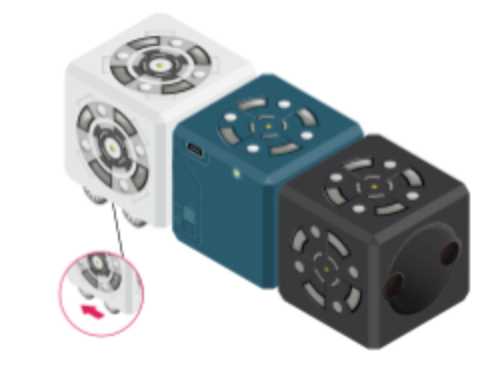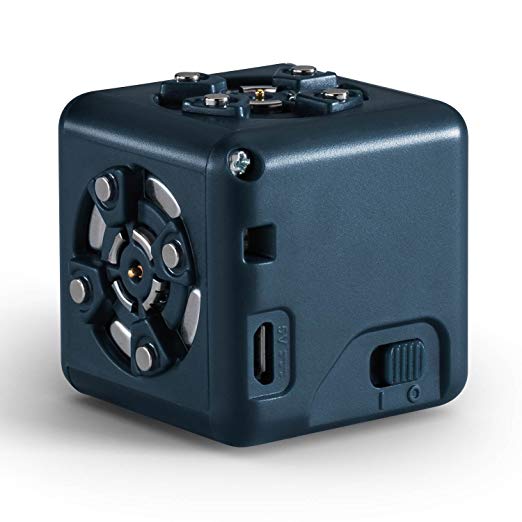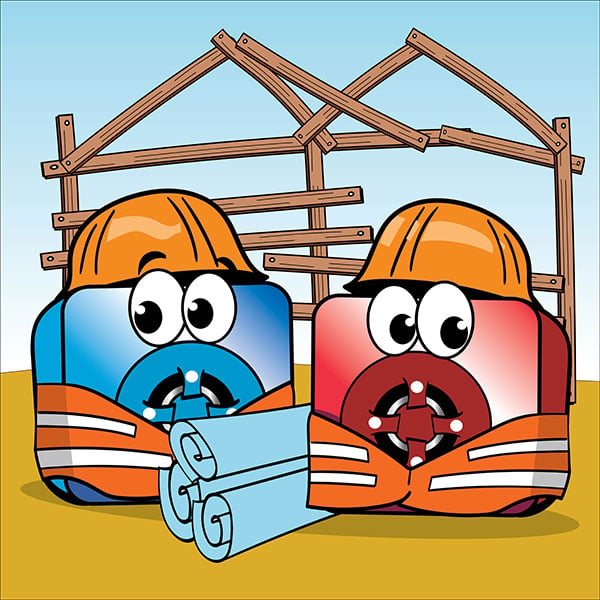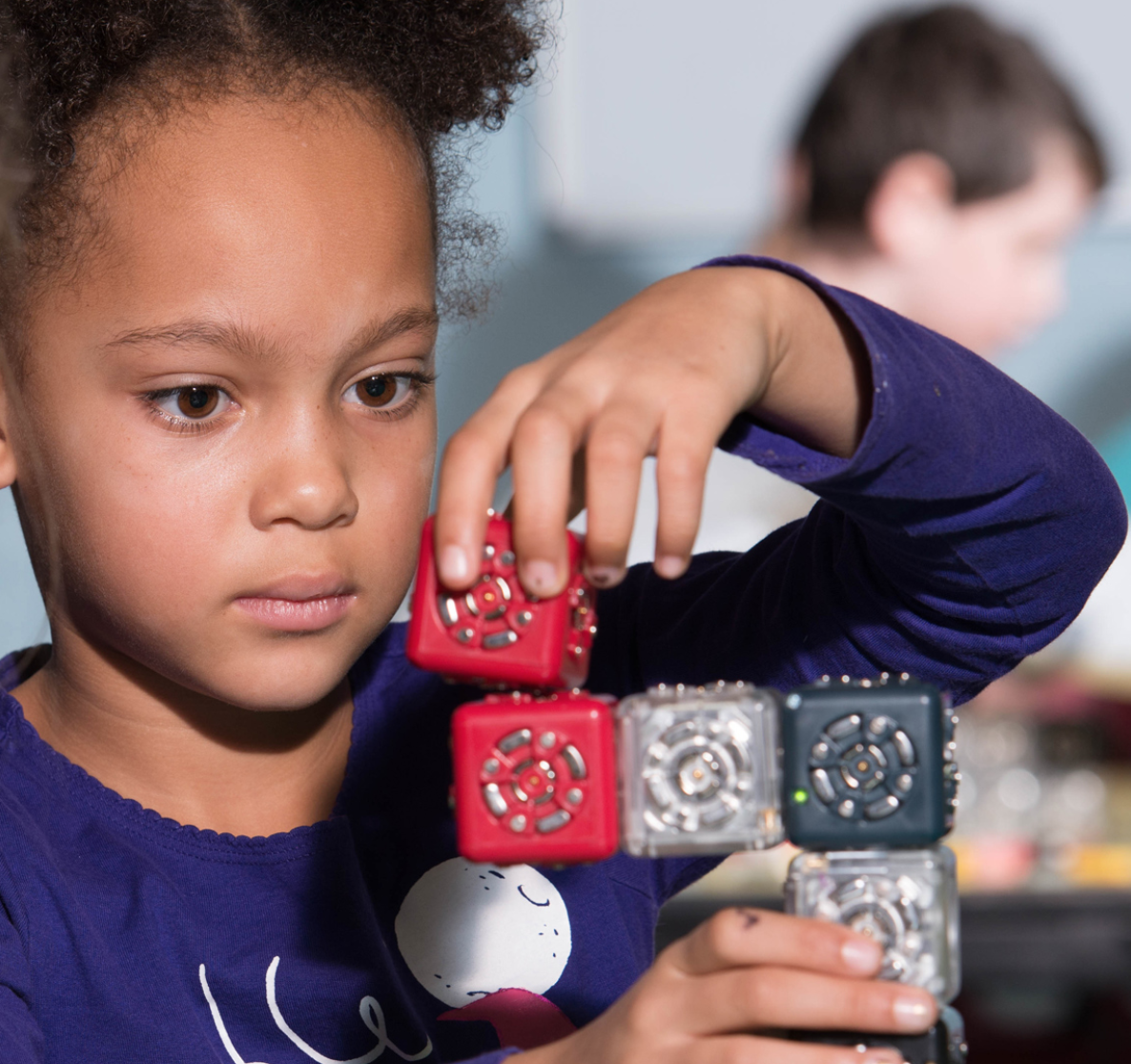Lesson Modules
Teaching Tips:
- Introducing Cubelets without the Battery is a helpful classroom management trick. By starting today, you set the precedent for future lessons that so if students are getting ahead of themselves, you can take away their Battery while they plan and think together.
- Before class, have your groups planned - think also of what collaboration structures make the most sense for your class or your school. Possible team roles:
- Materials Manager
- Team Leader (in charge of making sure group stays on task)
- Recorder
- Team Monitor
Classroom Management
- Plan 6 student groups (groups should be no more than 4 students and work best with 2-3).
- Brainstorm your preferred collaboration norms ahead of time so you have an outline for summarizing your students’ thinking in Step 3 - Experience Before Expertise.
Observe
Fraidy Bot

“Today we’re going to work in groups to build robots using a tool called Cubelets. Here is a robot I built before class.”
- Show students the Fraidy Bot on a flat surface as it runs away from your hand.
“What do you notice?”
- Students share out observations. As they do, take apart the blocks and put them back together in different orientations.
“Today, you’ll have the opportunity to build robots with your group, but before we begin, we need to talk about what it means to work in a group.”
Group Norms and Expectations
“Think about the best groups you’ve ever worked or played in. What were your group mates doing that made it so great?”
Students share out ideas. Record ideas on an anchor chart.
“So as a class, could we agree on our group norms being [fill in the blank with your summary of the students’ ideas in addition to your own]”
“Today, you will be in groups of [2, 3, or 4] students. Each person will have a very specific job. [Review the jobs you decided on during your preparation for class].”
Wrap up the conversation by reviewing the group norms, separating students into their groups, and assigning group roles.
Once students are in their groups, have them share with the other group members what their role in the group is.
Notes
It is recommended that one of your group norms is: Be respectful of materials. Cubelets are made for children and can sustain the hazards of normal play (falling off low tables, for instance), but are also machines that can break.
Today we’re going to work in groups to build robots using a tool called Cubelets. Here is a robot:
What did you notice?
Today, you’ll have the opportunity to build robots with your group, but before we begin, we need to talk about what it means to work in a group.

Think about the best groups you’ve ever worked or played in. What were your group mates doing that made it so great?
So as a class, we could agree on our group norms. Today, you will be in groups, and each person will have a very specific job.
Teaching Tips:
- Have Materials Managers pick up their tray of Cubelets (or pass Cubelets out to each group, if you do not have a Materials Manager role).
“Before I set you free to explore this toy with your group, I’d like to point out one very important Cubelet. Can you guys all find this Cubelet in your materials tray?”
- [Hold up Battery Cubelet]
“Do you have any ideas what this Cubelet might be - and why it’s so important?”
- [Battery - has to be turned on and attached to the robot construction for the robot to do anything. Provides power]
“Excellent- Please turn on your Battery Cubelet. How do you know it’s turned on?”
- [Green light]
- Have Materials Managers pick up their tray of Cubelets (or pass Cubelets out to each group, if you do not have a Materials Manager role).
Notes
The goal of this open play time is for students to practice their group roles and to get familiar with how Cubelets attach together. During this time, pass out Battery Cubelets to groups who are ready. Some things to look for as you walk around the room:
- Look for students and groups who are rotating single Cubelets within their robots
- Look for which groups are trying to build specific robots vs. using the Cubelets as passive stacking towers.
- Pay attention to students adhering to the expectations associated with their group roles
Before you explore this toys with your group, can you guys all find this Cubelet in your materials tray?

Do you have any ideas what this Cubelet might be - and why it’s so important?
How do you know it’s turned on?
Teaching Tips:
Discuss Learning
“What did you learn about Cubelets today? What is your favorite part so far? Is there anything you wish you already knew?”
- Students share out.
“Has anyone figured out what any of the Cubelets do?”
- Students share out.
“Does anyone have any specific tricks that helped them today that they’d like to share with the other learners?”
- Students share out.
“What didn’t work for you today?”
- Students share out.
Materials Managers put away Cubelets.
Notes
The goal of this open play time is for students to practice their group roles and to get familiar with how Cubelets attach together. As soon as possible during this time, pass out Battery Cubelets to groups who are ready. Some things to look for as you walk around the room:
- Look for students and groups who are rotating single Cubelets within their robots
- Look for groups that are trying to build specific robots vs. using the Cubelets as passive stacking towers.
- Pay attention to students adhering to the expectations associated with their group roles.
Discuss all together:
What did you learn about Cubelets today? What is your favorite part so far? Is there anything you wish you already knew?
Has anyone figured out what each of the Cubelets do?
Does anyone have any specific tricks that helped them today that they’d like to share with the other learners?
What didn’t work for you today?
Teaching Tips:
Whole Class Reflection
“How did your group work together today? Do you have anyone you want to celebrate or thank in your group?”
- Students share out.
Optional: Ticket out: Draw one Cubelet you used today, and explain what its role was.
Intervention
Depending on their age, some students will be only interested in using Cubelets as building blocks as opposed to robots. Today, let these students play in this way but make notes of which students are at this developmental level. They may need fewer blocks for future lessons as they get used to what Cubelets can do.
Extension
For students who are ready to build robots that do things, make sure they have a Battery Cubelet to get started. Then consider asking them to find a way to build a robot with only three blocks. (Hint: one of the blocks will need to be the Battery!)


